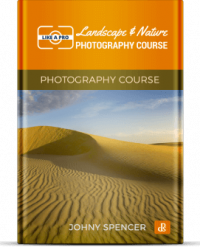How to Get Amazing Photos When the Weather is Awful
By Jason Row#photographyeveryday #photographyislife #photographylover
Are you a fair-weather photographer? Let’s be honest, when the rain is tipping down or the wind bending trees to 90 degrees, it can be difficult to garner motivation to shoot. However it is often a very good time for some great shots. Bad weather can give us some of the most dramatic images we will ever shoot. Equally the transition from bad weather to better weather gives us the juxtaposition of the dark and foreboding with the light and inspiring. Today we are going to look at what to shoot, how to shoot it and importantly how to protect yourself in the bad weather.
Types of Bad Weather
The main types of bad weather are heavy rain, strong wind, snow, and mist and fog. Each has its own unique challenges but all are capable of providing stunning shots.Rainy days are great for colour contrast, especially on dark dank days. The ambient light tends to be very blue, yet artificial light from cars, offices and shops will contrast that blue with bright warm yellows and reds. High shutter speeds can freeze the raindrops as they fall. By dropping to a slower shutter speed you can blur the rain as it falls. You don’t even have to be outside, shooting through a rain splattered window lends itself to very enigmatic images. Of course rain lends itself to great reflections too, not only in puddles but in any wet and shiny such as a cobbled street.

Rain can lead to some lovely images.
Wind is tough to shoot in but perfect for slow exposures. Leaves become a soft blur, water a foaming cauldron. Waves look majestic, crashing against a coastline or man made structures. A sturdy tripod and very sheltered place are the order of the day, especially if you plan to shoot slow shutter speeds. Hanging your camera bag underneath the tripod can add extra need weight and stability in high winds.
Windy days lend themselves to the abstract.
Mist and fog provide such beautiful images that we have written an entire article about it. Fog can add drama and intrigue to an image, hinting at what is in the background. Mist adds patches of low contrast and clarity giving a very ethereal feel to an image. With both, your main issues will be focus and exposure. Autofocus may hunt in low contrast scenes such as fog. Switch over to manual to get the best results. Exposure meters may well underexpose, so either bracket or add some exposure compensation. Plus one stop is a good starting point. Photo by Steve Wilson
Photo by Steve Wilson
Overcome the technical problems with mist and fog and you can create stunning images.
Snow is perhaps the most challenging. The cold does not sit well with modern batteries. Turning small controls with cold or gloved hands can be tricky. The rewards can be great though. Freshly lain snow looks magical, pure white covering the landscape. Snowy days are low contrast and flat but this serves to make any colour in the scene pop. Exposure and autofocus are again likely to be your main issues.
Snow is also challenging but allows for beautiful images.
Of course one thing a lot of bad weather has in common is a dramatic cloudscape. Dark brooding skies give depth and drama to our images. Take along some graduated ND filters to really punch the clouds out whilst maintaining a good exposure on the ground.Protecting Yourself and Your Equipment
With bad weather always think safety first. Shoot any weather event from an area of relative shelter and have a plan to get under cover if needed. Kit yourself out with good quality rain jacket, shoes and gloves. Make sure your equipment is protected in a waterproof camera bag, many are not.To shooting in rain, look at investing in dedicated rain covers for your camera. These are inexpensive plastic bags in which you seal the camera and lens.

Don't rely solely on your camera's weather proofing.
Make sure all your lenses are protected with a UV filter. In the cold take plenty of fully charged batteries. A large memory card is useful too, negating the need to swap cards in the inclement weather. Also check to see if your insurance will cover weather issues. Many higher end cameras and lenses are weather sealed but don’t rely on this. Add the extra protection mentioned above to give yourself more assurance.Bad weather does not mean bad photographs. With a little forethought and planning, bad weather can give us some incredible pictures. The most important aspect of shooting in poor conditions is to protect yourself and protect your equipment, if you have that covered, you are on the way to spectacular images.
Note: Bad weather can also be the perfect time to get powerful long exposure photographs.
 https://resources.digital-photography-school.com/ref/937/
https://resources.digital-photography-school.com/ref/937/
No comments:
Post a Comment
Note: Only a member of this blog may post a comment.